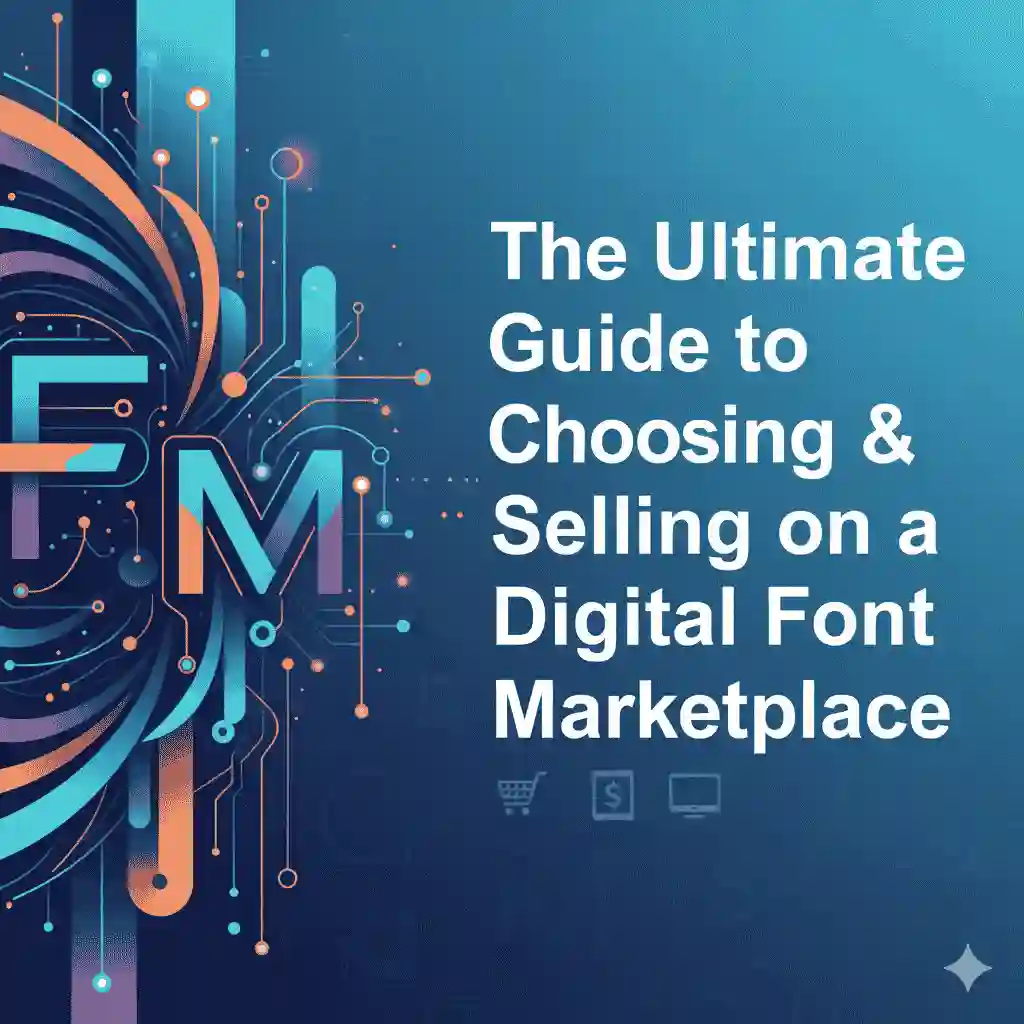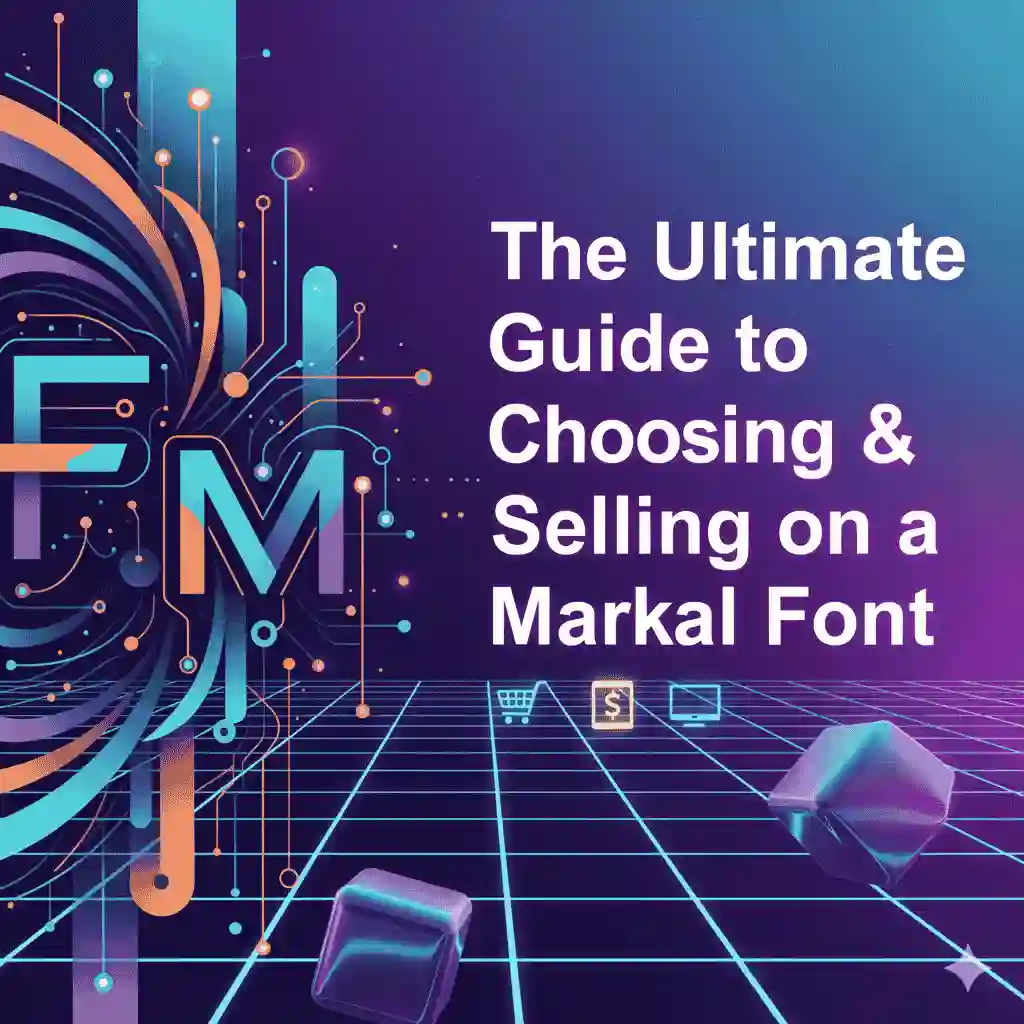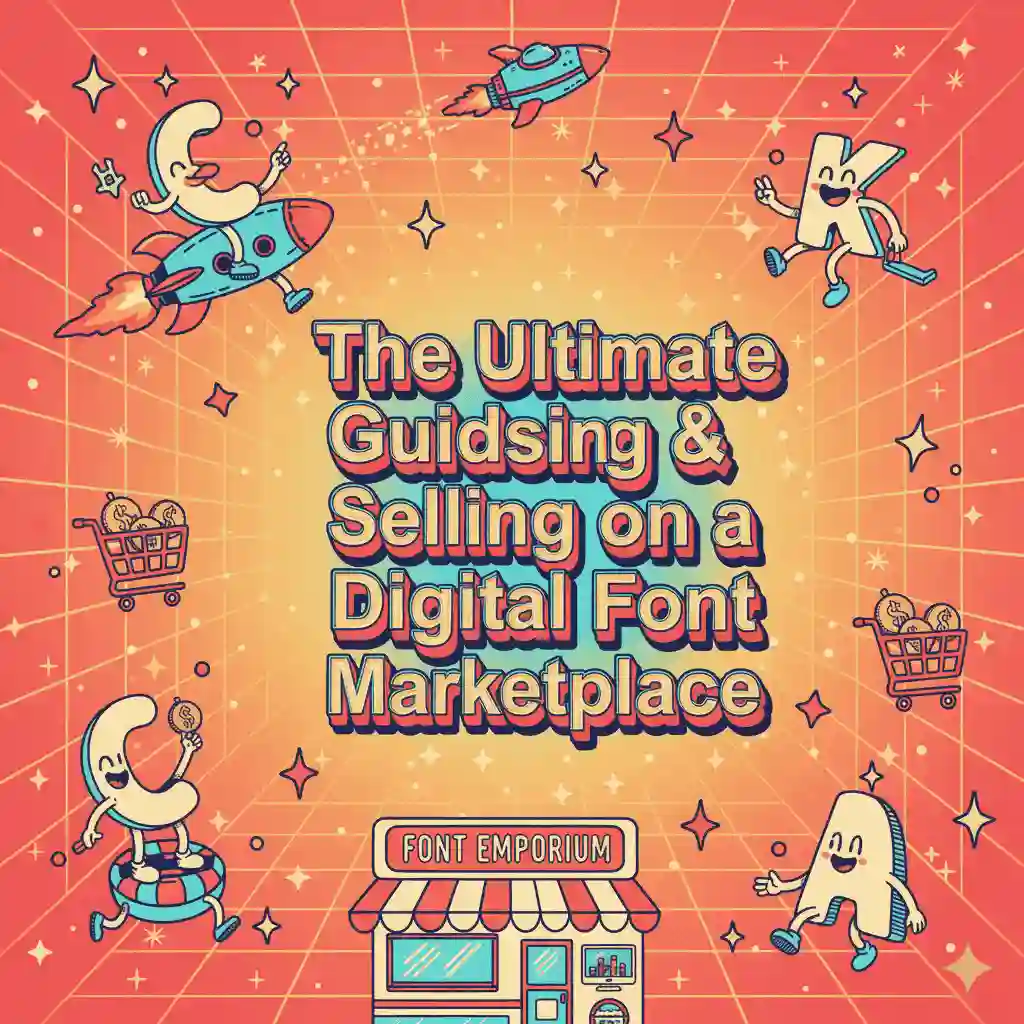Table of Contents
- Introduction: Why Digital Font Marketplaces Are Important
- What Defines a Great Digital Font Marketplace
- How to List and Promote Your Fonts Effectively
- Licensing Models and Pricing Strategies
- Building Trust and Branding Your Font Business
- Examples of Leading Marketplaces
- Showcasing EdricStudio Font Products
- Challenges to Watch Out For
- Conclusion and Next Steps
1. Introduction: Why Digital Font Marketplaces Are Important

Typography is a cornerstone of design, branding, and digital communication. Today, most designers and businesses no longer buy fonts directly from individual foundries only—they rely on a digital font marketplace. These marketplaces are platforms where type designers can showcase, license, and sell their fonts to a global audience.
For independent designers, the benefit is obvious: you get access to instant traffic, secure payment processing, built-in licensing, and global exposure. For buyers, marketplaces simplify discovery and trust.Some of the most popular digital font marketplaces include Creative Market, MyFonts, and Fontspring. These platforms set the standard for how fonts are distributed in today’s digital economy.
2. What Defines a Great Digital Font Marketplace
When evaluating a marketplace to sell your fonts, here are the most important factors:
- Traffic & Discoverability – Does the marketplace bring in millions of designers every month? Can your font be easily found in categories like serif, sans serif, or script?
- Licensing Infrastructure – The platform should support desktop, web, app, and extended licenses to serve both freelancers and large enterprises.
- Royalties & Payments – Check the commission rate (commonly 30–50%), payout methods (PayPal, wire transfer), and payment frequency.
- File Support – A strong marketplace should support OpenType, WOFF, WOFF2, and variable fonts.
- Marketing Features – Options such as featured listings, discount campaigns, and bundles can increase your visibility.
- Customer Protection – Marketplaces with clear license enforcement and anti-piracy policies add long-term credibility.
3. How to List and Promote Your Fonts Effectively

Listing your font is just the first step. Success depends on how you present and promote it.
a) Product Presentation
- Upload high-quality mockups showing your font in real-world use (logos, posters, packaging, web design).
- Provide a complete character set and a PDF specimen.
- Showcase ligatures, alternates, multilingual support, and OpenType features.
b) SEO in Your Listing
- Use descriptive titles like “Elegant Modern Serif Font” or “Handwritten Script Typeface.”
- Include relevant tags such as serif, sans serif, vintage, display, modern script.
- Write keyword-rich but natural descriptions mentioning “digital font marketplace” when appropriate.
c) Promotion Outside the Marketplace
- Share your fonts on Instagram, Pinterest, Behance, and design forums.
- Publish blog posts (like this one) with backlinks to your font listings.
- Offer seasonal discounts or bundles to attract budget-friendly designers.
4. Licensing Models and Pricing Strategies

Licensing determines how customers can use your fonts and how much revenue you earn. Common models include:
| License Type | Usage | Typical Pricing |
|---|---|---|
| Desktop | Print, branding, personal projects | Entry-level price |
| Webfont | Embedded in websites (priced per traffic/domain) | Mid-tier |
| App / eBook | Embedded in apps or digital publications | Premium |
| Enterprise | Multi-user or organization-wide use | Custom |
| Extended / Commercial | Products for resale (e.g., merchandise) | High premium |
Tips for pricing:
- Offer bundles (desktop + web + app) to increase order value.
- Price competitively but highlight unique features for premium justification.
- Study competitors in marketplaces to avoid underpricing or overpricing.
5. Building Trust and Branding Your Font Business
Selling fonts is not just about having files—it’s about building a trusted brand.
- Maintain a professional foundry profile with consistent branding.
- Collect positive reviews and display testimonials from buyers.
- Be transparent about license terms to avoid confusion.
- Respond to customer questions quickly.
- Release updates or add new features (like variable fonts) to show ongoing support.
Trust and brand recognition will encourage repeat buyers and higher-value clients.
6. Examples of Leading Marketplaces
To understand the dynamics of selling fonts, let’s look at some examples:
- Creative Market – Focuses on indie designers, great for visibility, offers bundles and regular sales.
- MyFonts – One of the largest marketplaces globally, ideal for reaching a professional audience.
- Fontspring – Known for straightforward, perpetual licensing.
- Envato Elements – Subscription-based model where designers are paid per download.
7. Showcasing EdricStudio Font Products
If you’re browsing for fonts on a digital font marketplace, you’ll also want to explore independent foundries like EdricStudio. Here are a few products that fit perfectly for branding and digital use:
- Ekstra Ordinary Font – A modern calligraphy font ideal for wedding invitations and elegant branding.
- 10,000 Fonts Pack Premium – A massive bundle that offers unbeatable value for designers who need variety.
- Summitsoft Creative Fonts Collection – A curated package for versatile creative projects.
- 11,000+ Biggest Fonts Collection – Perfect for designers who want an entire library at their fingertips.
- Summitsoft 5000 Fonts Premium Pack – A mid-sized, affordable collection for freelancers and agencies alike.
These products not only showcase EdricStudio’s range but also demonstrate how bundling works as an effective sales strategy inside a marketplace.
8. Challenges to Watch Out For
While digital font marketplaces open big opportunities, there are also risks:
- Piracy – Fonts can be illegally shared; watermark previews and DMCA enforcement are essential.
- Market Saturation – With thousands of fonts uploaded daily, standing out requires branding and quality.
- Misused Licenses – Customers may buy a desktop license but use the font on the web. Clear terms are key.
- Global Tax & Payments – VAT, withholding taxes, and different payout systems can complicate earnings.
9. Conclusion and Next Steps
A digital font marketplace is one of the most effective channels to grow your font sales. By carefully choosing the right platform, presenting your fonts with strong visuals, pricing them with smart licensing, and building trust as a foundry, you can scale your business sustainably.
Next steps:
- Research and register with at least one global marketplace.
- Optimize your listings with SEO keywords and stunning previews.
- Link your marketplace fonts back to your EdricStudio store for brand synergy.
- Experiment with bundles, discounts, and seasonal promotions.
- Continuously release new fonts to build a long-term audience.
By following these steps, you can turn your creativity into a profitable and sustainable business in the global font industry.
🔗 References for further reading: